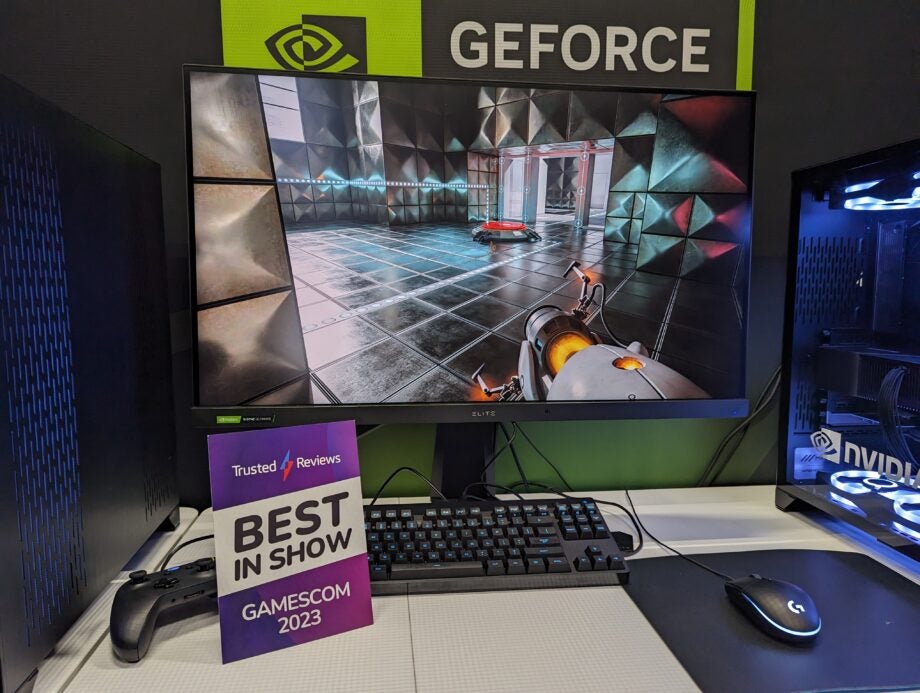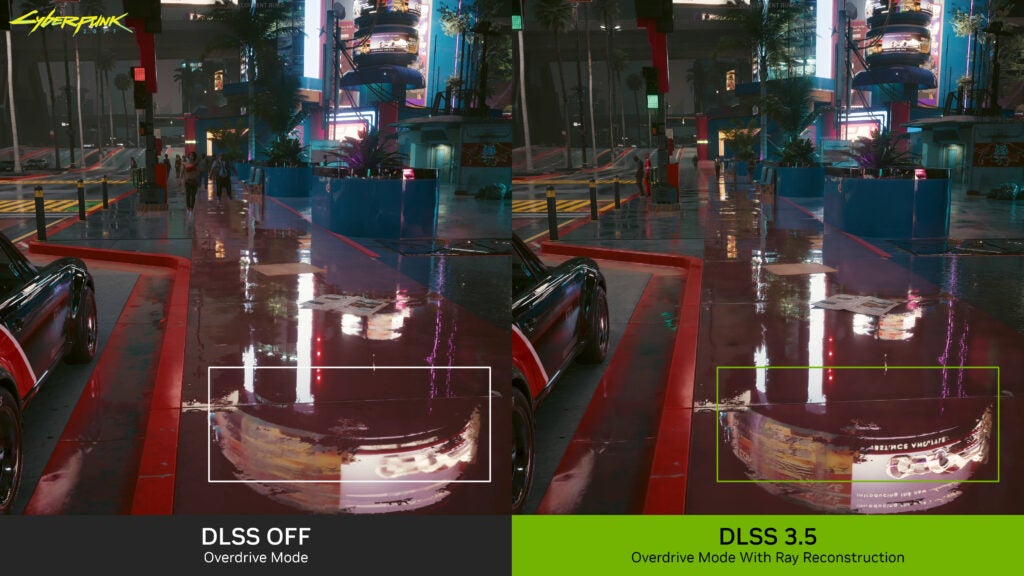Nvidia DLSS 3.5 proves AI is now more important than raw graphics power

OPINION: When it comes to new graphics cards, we’re all obsessed with performance and how high they can push the frame rate for our favourite games.
That’s understandable, as that’s been the main appeal of upgrading to a new graphics card for as long as they’ve existed. But with performance gains starting to slow between generations, it’s becoming increasingly less tempting to upgrade.
However, I’d make the argument that raw performance upgrades are no longer the main incentive to upgrade. For Nvidia’s latest RTX 4000 cards for example, it’s the improvements made to ray tracing and DLSS that are the most exciting advancements.
The recent announcement of DLSS 3.5 is testament to this. Nvidia’s AI-powered technology has become a beloved feature for pushing up the frame rate of supported games to even loftier heights than the GPU’s hardware is capable of. That’s a remarkably useful feature in its own right, but DLSS 3.5 introduces yet another exciting feature called Ray Reconstruction.

Apple TV+
The Home of Apple Originals. Enjoy star-studded, award-winning series, films, and more. Grab your 7 day free trial now.
- Apple
- 7-day free trial
- £8.99 p/m
Ray Reconstruction uses artificial intelligence to enhance the visual appearance of ray-traced lighting effects, correcting any technical mistakes to result in a more life-like appearance.
As you can see from the below image provided by Nvidia, Ray Reconstruction has been able to enhance the clarity of a puddle’s reflection of a digital billboard in Cyberpunk 2077.

At Gamescom 2023, Nvidia invited me to a visual demonstration of the new DLSS 3.5 technology, and it was even more impressive to see on a moving image. Whereas standard ray tracing may see blurring to the reflection as you move your character around – due to the intensive real-time computational workload of these realistic light beams – activating the new DLSS 3.5 technology ensures the reflections look remarkably clear at all times.
The video of Portal below also demonstrates that DLSS 3.5 can fix technical errors of ray tracing lighting effects. Look to the left of the Companion Cube, and you will see an odd shimmering effect, which shouldn’t be occurring since the light source remains stable. Activate DLSS 3.5, and this is immediately corrected, resulting in more realistic lighting effects.
The enhanced lighting effects made a far greater impact on the visual quality of a game than say a higher frame rate would. It was a real eye opener to me – while we’re all desperate for new consoles and graphics to push frame rates to new heights, it’s clear that the likes of ray tracing are far more influential to the visual fidelity – at least to the average gamer who doesn’t need eSports-grade performance.
Don’t get me wrong, the unsubstantial performance increase of the RTX 4000 cards compared to the preceding RTX 3000 series is incredibly underwhelming, and there’s no hiding that. But the introduction of DLSS 3.5 seemingly does a great job of making up for that.
The big issue right now? DLSS 3.5 will only be supported by a handful of games when it launches later this year, including Alan Wake 2, Cyberpunk 2077, Cyberpunk 2077: Phantom Liberty and Portal with RTX. The level of game support is going to need to improve considerably in the next year if DLSS 3.5 is to become a worthwhile consideration for the purchase of an RTX 4000 Series card.
But after seeing the tech demonstration at Gamescom, I have renewed excitement for the future of Nvidia graphics cards. It’s also a lesson to gaming systems outside of Nvidia’s ecosystem, especially for companies such as PlayStation, Xbox and Nintendo. Raw performance is still undoubtedly important, but I’d love to see a greater emphasis on AI-powered features such as ray tracing for the next generation of systems as it’s more capable of providing that generational wow factor.








